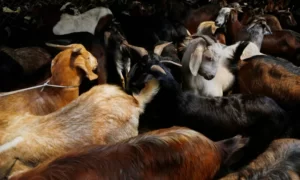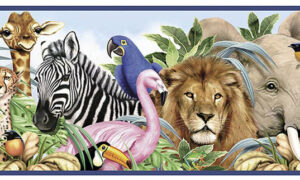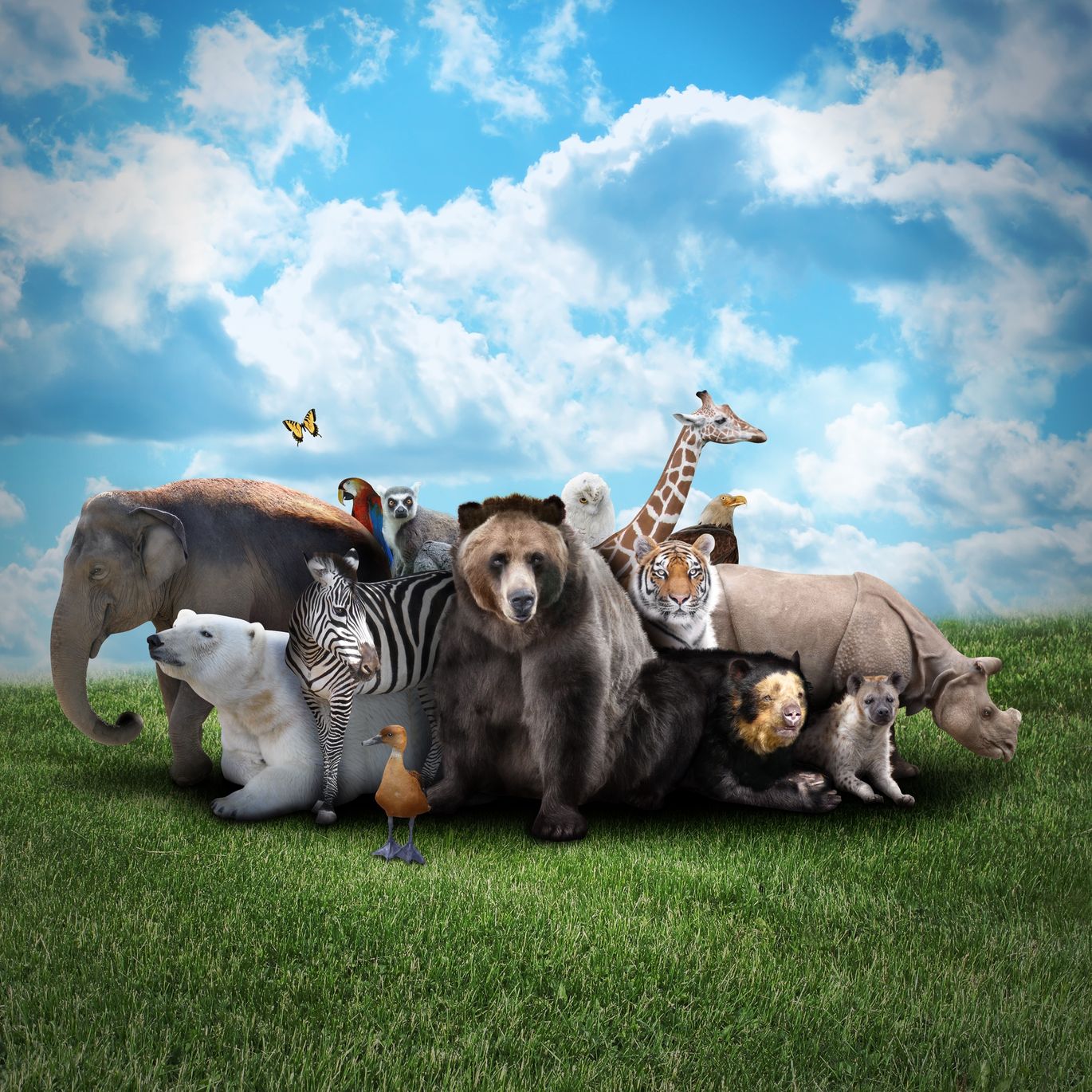Extinct Animals List: Discover Species No Longer with Us
From the woolly mammoth to the dodo bird, the world has lost many fascinating creatures throughout its history. Many of these animals were unable to adapt to changes in their environments, while others fell victim to overhunting and habitat loss. In this article, we will explore some of the most interesting extinct animals and the reasons for their disappearance.
Table of Contents Extinct Animals List
- Introduction
- The Extinction Crisis
- Causes of Extinction
- Habitat Loss
- Overhunting
- Climate Change
- Famous Extinct Animals
- Dodo Bird
- Woolly Mammoth
- Passenger Pigeon
- Tasmanian Tiger
- Saber-Toothed Tiger
- Great Auk
- Pyrenean Ibex
- Carolina Parakeet
- Steller’s Sea Cow
- Baiji Dolphin
- Lesser-Known Extinct Animals
- Quagga
- Irish Elk
- Moa
- Haast’s Eagle
- Thylacosmilus
- Aurochs
- Tecopa Pupfish
- West Indian Manatee
- Caribbean Monk Seal
- Japanese Sea Lion
- Extinct Animals and Conservation Efforts
- Conclusion
- FAQs
Introduction
The world is currently experiencing a massive extinction crisis, with many species disappearing at an alarming rate due to human activity. However, the loss of species is not a new phenomenon. Throughout history, many fascinating animals have gone extinct, leaving only fossils and historical records to tell their stories. The study of these extinct animals not only helps us understand the past but also provides valuable lessons for conservation efforts today.
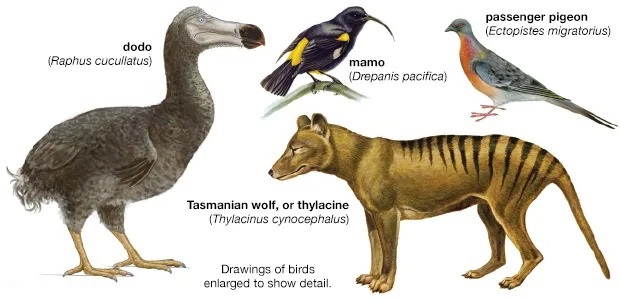
Extinct Animals List: Discover Species No Longer with Us
The Extinction Crisis
The current extinction crisis is driven by human activity such as habitat destruction, climate change, and the introduction of invasive species. The rate of species loss is estimated to be 1,000 times higher than natural rates of extinction. While extinctions are a natural part of Earth’s history, the current crisis is unique in that it is caused by human activity rather than natural events.
Causes of Extinction
There are many reasons why animals become extinct. Here are three of the most common causes:
Habitat Loss
Habitat loss is the most significant threat facing many species today. As humans continue to convert wild habitats into farmland, cities, and roads, many species are left with nowhere to go. This often leads to population declines and, eventually, extinction.
Overhunting
Overhunting has led to the extinction of many species throughout history. Humans have hunted animals for food, fur, and other resources for thousands of years. However, with the advent of modern hunting technology, humans are now able to hunt animals faster and more efficiently than ever before, leading to population declines and extinction.
Climate Change
Climate change is another significant threat facing many species today. As temperatures rise, many animals are unable to adapt to their changing environments, leading to population declines and, in some cases, extinction.
Famous Extinct Animals List
Some extinct animals are more well-known than others. Here are ten of the most famous:
Dodo Bird
The dodo bird was a flightless bird that was native to the island of Mauritius. It was first discovered by European explorers in the late 16th century and became extinct less than a century later. The dodo was unable to fly and had no natural predators on the island, making it an easy target for human hunters and invasive species. The last confirmed sighting of a dodo bird was in 1681.
Woolly Mammoth
The woolly mammoth was a massive, shaggy-haired elephant that roamed the Earth during the last Ice Age. While many mammoths went extinct due to climate change and habitat loss, some populations were hunted to extinction by early humans. The last known population of woolly mammoths went extinct around 4,000 years ago on an isolated island in the Arctic Ocean.
Passenger Pigeon
The passenger pigeon was once the most abundant bird in North America, with flocks containing millions of individuals. However, due to overhunting and habitat loss, the species went extinct in the wild by the early 1900s. The last passenger pigeon died in captivity in 1914.
Tasmanian Tiger
The Tasmanian tiger, also known as the thylacine, was a unique marsupial predator that was native to Australia and Tasmania. The species was hunted to extinction in the early 20th century due to fears that it was preying on livestock. The last known thylacine died in captivity in 1936.
Saber-Toothed Tiger
The saber-toothed tiger, also known as Smilodon, was a large carnivorous mammal that lived during the Pleistocene epoch. While the exact cause of their extinction is unknown, it is believed that climate change and habitat loss played a significant role.
Great Auk
The great auk was a flightless seabird that was once found throughout the North Atlantic. Due to overhunting for their feathers, meat, and oil, the species went extinct in the mid-19th century.
Pyrenean Ibex
The Pyrenean ibex was a subspecies of wild goat that was once found in the Pyrenees mountains between France and Spain. The last known individual died in 2000, making it the first extinct mammal to be cloned.
Carolina Parakeet
The Carolina parakeet was a brightly colored parrot that was once found throughout the southeastern United States. The species was hunted for its feathers and to protect crops, leading to its extinction in the early 20th century.
Steller’s Sea Cow
Steller’s sea cow was a massive herbivorous mammal that was once found along the coast of Alaska. The species was hunted to extinction within 27 years of its discovery by European explorers.
Baiji Dolphin
The Baiji dolphin, also known as the Chinese river dolphin, was a freshwater dolphin that was native to the Yangtze River in China. The species was declared functionally extinct in 2006, with the last confirmed sighting occurring in 2002.
Lesser-Known Extinct Animals List
While some extinct animals are more famous than others, every extinct species has its own unique story. Here are ten lesser-known extinct animals:
Quagga
The quagga was a subspecies of zebra that was native to South Africa. The species was hunted to extinction in the late 19th century.
Irish Elk
The Irish elk was a massive deer with enormous antlers that lived during the last Ice Age. The species went extinct around 7,700 years ago.
Moa
The moa was a group of flightless birds that were native to New Zealand. The species went extinct around 500 years ago due to overhunting by early Maori settlers.
Haast’s Eagle
Haast’s eagle was a massive bird of prey that lived in New Zealand during the last Ice Age. The species went extinct around 600 years ago due to habitat loss and overhunting of its main prey, the moa.
Heath Hen
The heath hen was a subspecies of prairie chicken that was native to the eastern United States. The species went extinct in the early 20th century due to habitat loss and overhunting.
Tecopa Pupfish
The Tecopa pupfish was a small, brightly colored fish that was native to the Mojave Desert in California. The species went extinct in the 1980s due to habitat destruction and the introduction of non-native species.
Carolina Parakeet
The Carolina parakeet was a brightly colored parrot that was once found throughout the southeastern United States. The species was hunted for its feathers and to protect crops, leading to its extinction in the early 20th century.
Atlas Bear
The Atlas bear was a subspecies of brown bear that was native to North Africa. The species was hunted to extinction in the late 1800s.
Falkland Islands Wolf
The Falkland Islands wolf, also known as the warrah, was a unique canid that was native to the Falkland Islands. The species was hunted to extinction by the mid-1800s due to its predation on sheep.
Ivory-Billed Woodpecker
The ivory-billed woodpecker was a large, striking bird that was native to the southeastern United States. The species was declared extinct in the 20th century due to habitat loss and overhunting.
Dusky Seaside Sparrow
The dusky seaside sparrow was a subspecies of sparrow that was native to the southeastern United States. The species went extinct in the late 20th century due to habitat destruction and pesticide use.
Tecopa Pupfish
The Tecopa pupfish was a small, brightly colored fish that was native to the Mojave Desert in California. The species went extinct in the 1980s due to habitat destruction and the introduction of non-native species.
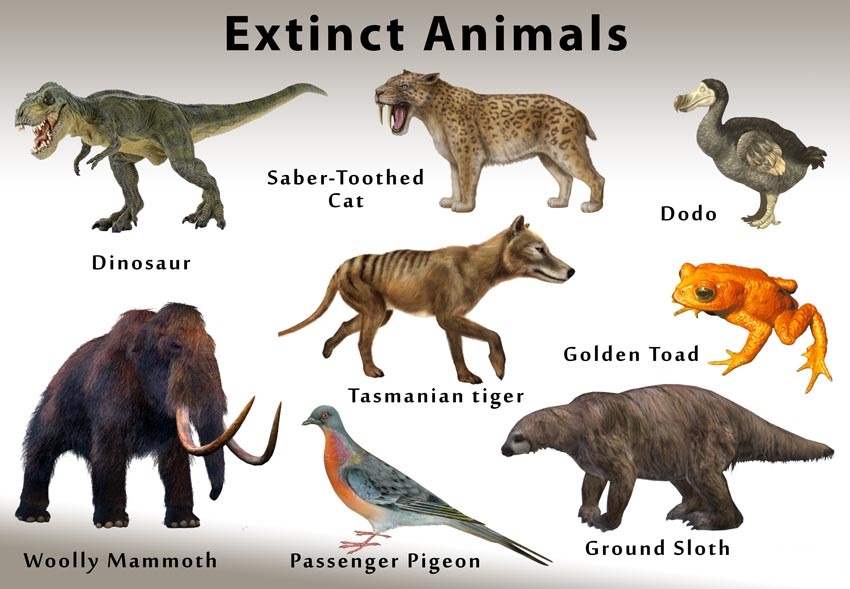
Extinct Animals List: Discover Species No Longer with Us
Conclusion of Extinct Animals List
The extinction of animals is a tragic loss for our planet’s biodiversity. While we can never bring back these extinct species, it is important to remember their stories and the factors that led to their demise. By studying extinct animals, we can learn more about the impact of human activities on the environment and work towards preventing further extinctions in the future.
FAQs
- What caused the extinction of the dodo bird? The dodo bird went extinct due to a combination of habitat loss, hunting, and the introduction of invasive species by humans.
- How many species have gone extinct in the last century? It is estimated that around 400 species have gone extinct in the last century alone.
- Can extinct species be brought back to life?While there have been efforts to bring back certain extinct species through cloning or genetic engineering, the process is extremely complicated and controversial. So far, only a few species, such as the Pyrenean ibex and the passenger pigeon, have been attempted to be brought back, but none have been successful in reintroducing them into the wild.
- What is the biggest threat to endangered species today?
The biggest threat to endangered species today is habitat loss due to human activities such as deforestation, urbanization, and agriculture. Climate change, pollution, and overhunting or poaching are also major threats to many species.
- How can we help prevent further extinctions?
We can help prevent further extinctions by reducing our impact on the environment through sustainable practices such as reducing waste, conserving energy, and supporting conservation efforts. We can also support policies and laws that protect endangered species and their habitats, and raise awareness about the importance of biodiversity and the impact of our actions on the planet.
Read More: How Many Species of Animals Are There on Earth?

